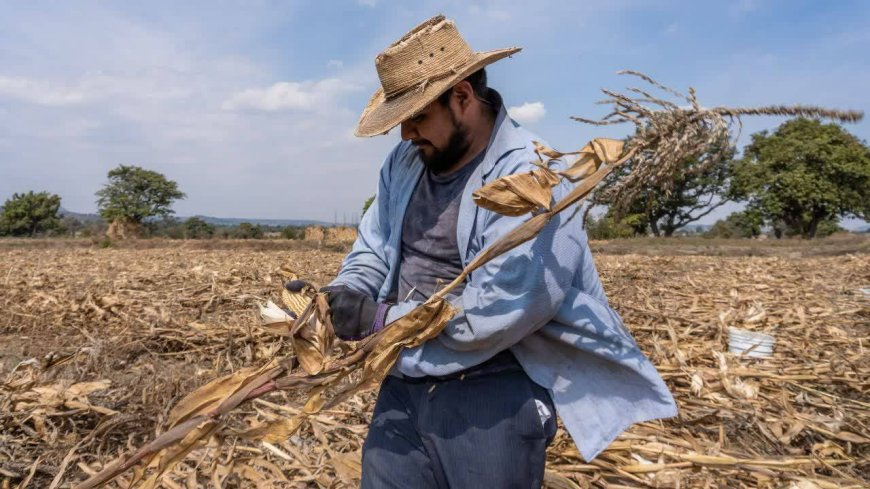Gaza's Silent Revenge: The Agricultural Catastrophe Facing Israel

The ripple effects of Israel's protracted war on Gaza and the persistent tensions along the Lebanese border are manifold, with the agricultural sectors in the occupied Palestinian territories bearing the brunt of the conflict. Recent reports have elucidated the alarming extent of the damage inflicted over the past few months, revealing a grim reality that threatens to destabilize the Israeli regime's food security and economy.
A comprehensive study by Ben-Gurion University underscores the profound impact of warfare on food production in Israel. The research highlights critical threats to food security, including the forced evacuation of farmers, the obliteration of farms and agricultural infrastructure, disruptions in the supply chain, and the government's diminishing capacity to regulate the volatile food markets. Such disruptions are not mere inconveniences; they pose existential risks to the regime’s food supply.
Agricultural regions surrounding the Gaza Strip are particularly crucial, contributing approximately 50% of Israel’s annual caloric intake. The reliance on these areas is stark: 40% of Israel’s agriculture, encompassing crops such as citrus fruits and vegetables, originates here. Additionally, a staggering 80% of the nation’s potato production is cultivated within these territories. Other essential crops—wheat, radish, leek, artichoke, ginger, spinach, chard, carrot, peanut, and barley—also predominantly come from this region. The confluence of the war on Gaza and instability has thus precipitated a dire scenario for food security.
The northern agricultural landscape fares no better. Hezbollah’s relentless missile and rocket attacks have sparked widespread fires, further decimating Israel’s agriculture. The severity of these fires, compounded by the inability of firefighting teams to respond promptly, has resulted in the destruction of extensive tracts of farmland. Approximately 1400 hectares of forests have been ravaged since the onset of the conflict, doubling the damage seen during the 2006 war against Lebanon.
According to the Ministry of Agriculture, these catastrophic events are anticipated to slash crop production by 10% this year compared to the average, as around 20% of cultivation areas lie within the volatile northern war zones. The destruction of 77% of fruit orchards in the Jalil-Golan region—home to nectarines, peaches, plums, apricots, apples, pears, and cherries—exacerbates the situation. Farmers in Metula and adjacent Kibbutzim face severe restrictions, preventing them from tending to their fields.
The exodus of hundreds of farmers from settlements near the Lebanese border, compounded by the incineration of fields, has inflicted further damage. The Golan Heights alone witnessed the annihilation of 1000 hectares of pasture and 28 hectares of vineyards and orchards, obliterating crucial agricultural output.
Egg production, a critical component of Israel’s food supply, has also suffered. Seventy percent of eggs consumed in Israel are produced in the north, where military conflicts have curtailed production. This shortfall forced the government to import eggs during Passover, a period of heightened demand.
Beyond the immediate physical destruction, the conflict has precipitated a manpower crisis in the Israeli regime’s agricultural sector. Foreign workers, who constitute over a third of the agricultural workforce, have fled the occupied territories en masse due to insecurity. Concurrently, Palestinian workers from the West Bank have been barred from continuing their activities by Netanyahu's administration, and many Israeli workers have been conscripted as reservists. This confluence of factors has led to a shortage of approximately 20,000 workers, severely crippling agricultural productivity.
The financial ramifications of this agricultural devastation are unprecedented. The Israeli government has allocated a mere 481 million shekels for the rehabilitation of agricultural areas around the Gaza Strip, a figure woefully inadequate given the scale of destruction. Comprehensive assessments of damage in both the southern and northern regions are likely to reveal far greater financial requirements.
In conclusion, Israeli aggression against Gaza has not only wreaked havoc on its agricultural sectors but has also exposed the fragility of its food security. The implications of these developments extend beyond mere economic loss, posing severe threats to the regime’s sustenance and stability. As the Zionist government grapples with these multifaceted crises, the prospects for a swift recovery remain bleak, overshadowed by the ongoing internal strife and its pervasive political schisms.













































